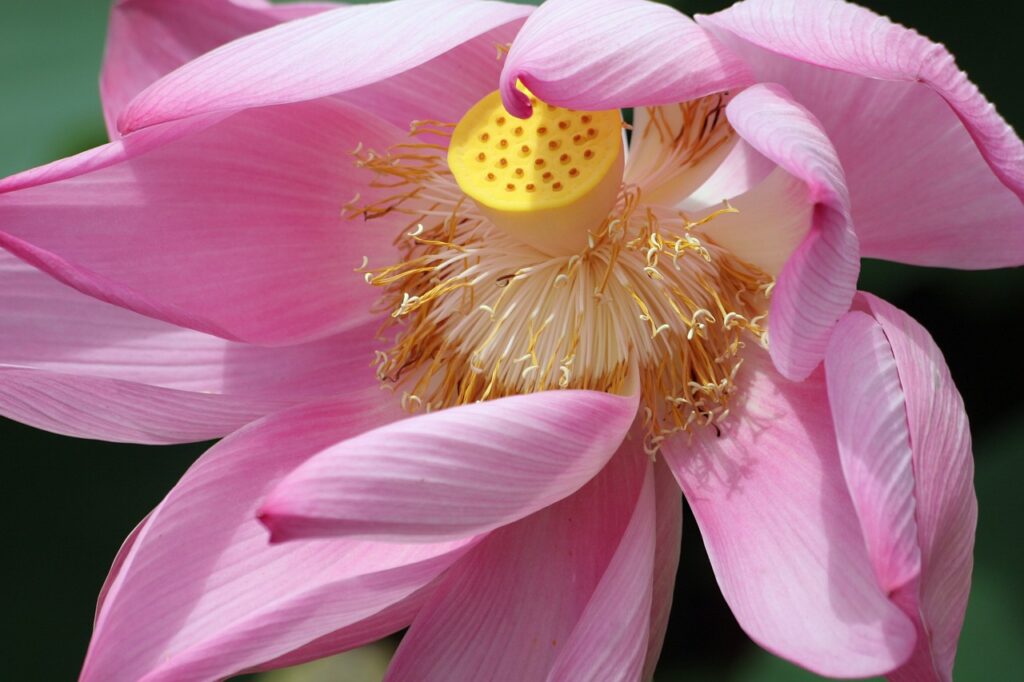Surinam is a hidden gem for international students seeking educational opportunities in an enchanting destination. This article will provide you with an overview of studying in Surinam and the wide range of opportunities available. From the stunning outdoor activities and historical sites to the vibrant cultural events and delicious food and drink, Surinam offers a unique experience for students. We will guide you on how to get there, where to stay, and the various educational opportunities that await you. Let’s embark on a journey to discover the wonders of studying in Surinam together.
Overview
Surinam, also known as Suriname, is a captivating country located on the northeastern coast of South America. With its rich cultural heritage, diverse wildlife, and stunning landscapes, Surinam offers a unique and exciting experience for international students. Whether you are seeking educational opportunities, outdoor adventures, or immersion in a vibrant and welcoming culture, Surinam has something for everyone.
Location and Address
Surinam is situated between Guyana to the west and French Guiana to the east, with the Atlantic Ocean to the north. Its capital and largest city is Paramaribo, located on the Suriname River, which is a hub of activity and a center of cultural and historical significance. Other major cities include Lelydorp, Nieuw Nickerie, and Moengo.

How to Get There
By Air
Surinam is easily accessible by air, with international flights arriving at Johan Adolf Pengel International Airport, located approximately 45 kilometers south of Paramaribo. Several major airlines provide direct flights to and from cities such as Miami, Amsterdam, and Port of Spain. From the airport, you can take a taxi or arrange for transportation to your destination.
By Land
If you are already in South America, Surinam can be reached by land through its borders with Guyana and French Guiana. Depending on your location, you can travel by bus, taxi, or private vehicle to cross the border. However, it is advisable to check the latest travel requirements and border regulations before embarking on your journey.
By Sea
Surinam also has a port in Paramaribo, which is occasionally visited by cruise ships and cargo vessels. If you are planning to arrive by sea, it is best to check with your chosen cruise line or shipping company for available options and schedules.
Driving Directions
If you prefer to drive to Surinam from neighboring countries, here are some general directions for reaching Paramaribo:
-
From Guyana: Head southeast on the East Bank Public Road, cross the Guyana-Surinam Bridge, and continue onto the East-West Link Road. Follow the signs for Paramaribo.
-
From French Guiana: Take the N1 south towards Saint-Laurent-du-Maroni. Continue on the N1 until you reach the Maroni River, where you will find the border crossing point at Albina. After crossing the border, follow the signs to Paramaribo.
Please note that these are simplified directions, and it is recommended to use a reliable map or GPS system for accurate navigation.

Outdoor Activities
Surinam is a paradise for outdoor enthusiasts, offering a wide range of activities to explore its breathtaking landscapes. You can embark on thrilling jungle treks, canoe along peaceful rivers, or go bird watching in the lush rainforests. The Brownsberg Nature Park, Central Suriname Nature Reserve, and Galibi Nature Reserve are just a few of the many natural wonders waiting to be discovered.
Museums and Art Galleries
For those interested in art, history, and culture, Surinam boasts a variety of museums and art galleries that showcase its diverse heritage. Visit the Suriname National Museum in Paramaribo to learn about the country’s history and see fascinating exhibitions. The Fort Nieuw Amsterdam Museum, located just outside the capital, offers a glimpse into Surinam’s colonial past. Additionally, the Readytex Art Gallery and Maroon Heritage Center provide insights into Surinam’s vibrant artistic scene.

Historical Sites
Surinam is home to numerous historical sites that tell the story of its rich past. Explore the UNESCO World Heritage-listed city center of Paramaribo, renowned for its well-preserved Dutch colonial architecture. Take a trip to the former slave plantation, Peperpot Nature Park, to learn about Surinam’s colonial history and the impact of the slave trade. The Jodensavanne, a former Jewish settlement, and the Mariënburg Sugar Factory are also significant historical landmarks worth visiting.
Cultural Events
Immerse yourself in Surinam’s cultural heritage by attending vibrant and colorful events. Celebrate the Holi Phagwa Festival, where locals and tourists come together to throw colorful powder and water at each other in a joyful celebration of spring. In November, experience the Suriname Jazz Festival, featuring renowned international and local jazz artists. The Keti Koti Festival, held on July 1st, commemorates the abolition of slavery and is a powerful testament to Surinam’s cultural diversity.

Outdoor Markets and Festivals
Indulge in the vibrant atmosphere of Surinam’s outdoor markets and festivals. The Central Market in Paramaribo is a bustling hub of activity, offering a wide array of fresh produce, clothing, and local handicrafts. Don’t miss the Marowijne Fruit Festival, held in the district of Albina, where you can indulge in delicious tropical fruits and experience traditional Surinamese music and dance.
Parks and Recreation
Surinam’s national parks and recreation areas provide opportunities for outdoor activities and relaxation. Explore the serene Commewijne River by boat or venture into the stunning Blanche Marie Falls for a refreshing swim. The Raleighvallen Nature Reserve is a haven for wildlife enthusiasts, with the chance to spot monkeys, sloths, and colorful birds. Nature lovers will also appreciate the peaceful atmosphere of the Palmentuin, a palm garden in the heart of Paramaribo.

Educational Opportunities
Surinam offers a host of educational opportunities for international students. The Anton de Kom University of Suriname, located in Paramaribo, provides a wide range of programs in various fields of study. The university prides itself on its multicultural environment, fostering a diverse and inclusive learning experience.
Music and Entertainment
Surinam’s music and entertainment scene is incredibly diverse, reflecting the country’s multicultural heritage. Enjoy traditional Surinamese music such as kaseko and kawina, which blend African rhythms with modern influences. Explore Paramaribo’s vibrant nightlife and visit live music venues, where you can dance to the rhythms of local bands or DJs.
Food and Drink
Surinam offers a delightful culinary experience with its fusion of various cuisines, influenced by its diverse population. Sample traditional Surinamese dishes such as roti, pom, and pindasoep, which reflect the country’s Indian, Javanese, and Creole heritage. Don’t forget to try the mouthwatering Surinamese pastries and desserts, such as bara and gummigummi.
Places to Stay
Surinam offers a range of accommodation options to suit different budgets and preferences. From luxurious hotels to cozy guesthouses, you will find comfortable and welcoming places to stay in Paramaribo and other major cities. Some popular choices include the Royal Torarica Hotel, Courtyard by Marriott Paramaribo, and Hotel Krasnapolsky.
Things to See Around
While in Surinam, take the opportunity to explore the beautiful surroundings beyond the cities. Visit the picturesque plantation district of Commewijne, known for its charming historic buildings, stunning views, and river cruises. Explore the unique nature reserve of Bigi Pan, famous for its birdwatching and stunning sunsets. A trip to the district of Nickerie will allow you to witness the impressive Nickerie Rice Fields and see traditional Hindu temples.
Wildlife
Surinam is blessed with a diverse ecosystem, making it an ideal destination for wildlife enthusiasts. Explore the dense rainforests and spot exotic bird species, such as the Guianan cock-of-the-rock and the harpy eagle. Keep an eye out for monkeys, sloths, caimans, and giant river otters. If you are lucky, you may even spot a jaguar or tapir in their natural habitat.
Safety Tips
While Surinam is generally a safe country for international students, it is always important to take precautions to ensure a smooth and enjoyable experience. Here are some safety tips:
- Be aware of your surroundings, especially in crowded areas or at night.
- Keep your belongings secure and avoid displaying expensive items.
- Stay informed about local guidelines and customs to respect cultural sensitivities.
- Use reliable transportation options and avoid walking alone in unfamiliar areas.
- Stay hydrated and protect yourself from the sun and insect bites in the tropical climate.
Conclusions
Surinam offers a remarkable blend of natural beauty, vibrant culture, and educational opportunities for international students. Whether you are interested in exploring its breathtaking landscapes, immersing yourself in its rich history and culture, or pursuing your academic dreams, Surinam welcomes you with open arms. Study in Surinam and embark on an unforgettable journey of discovery and personal growth in this enchanting South American gem.
